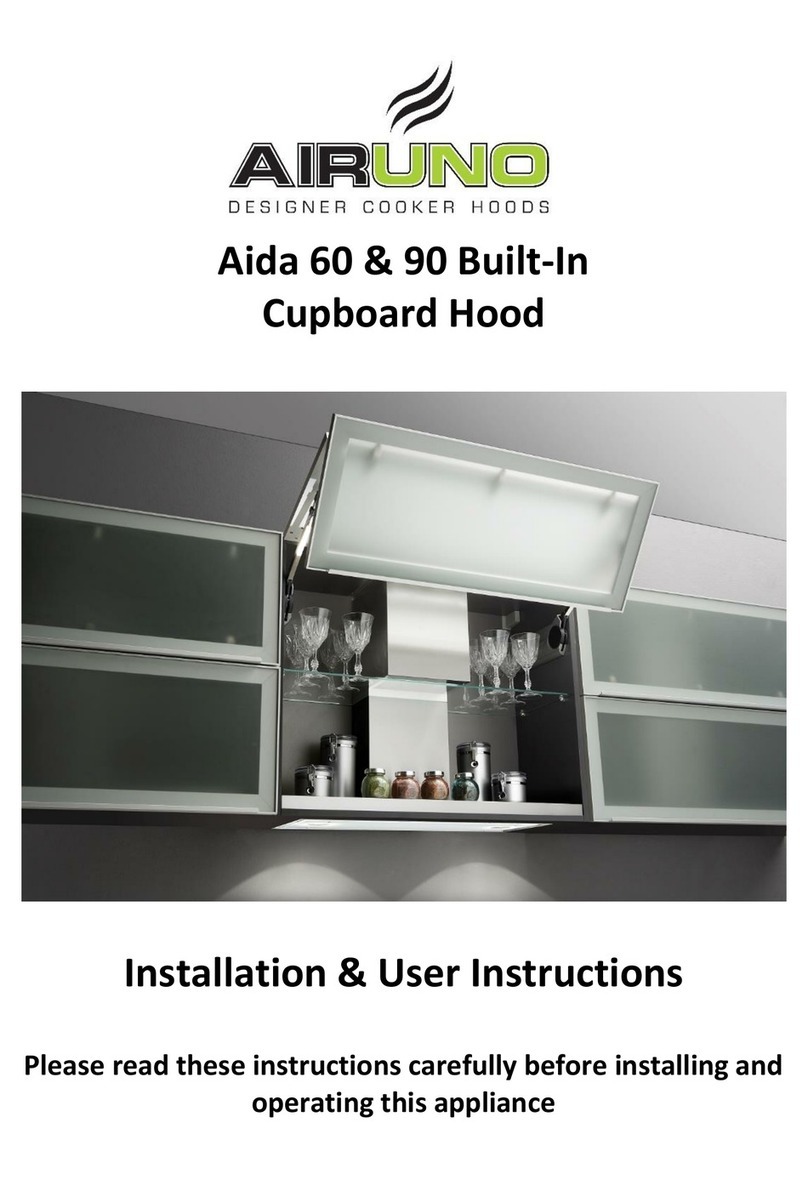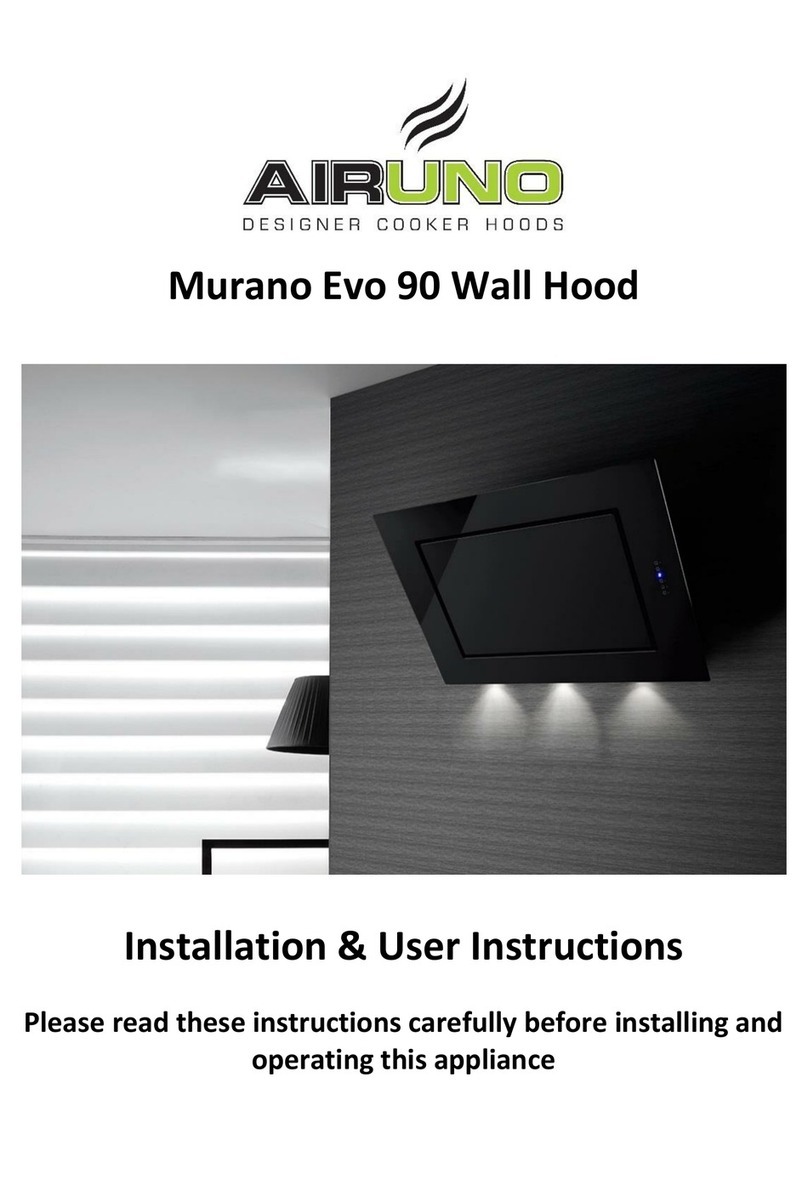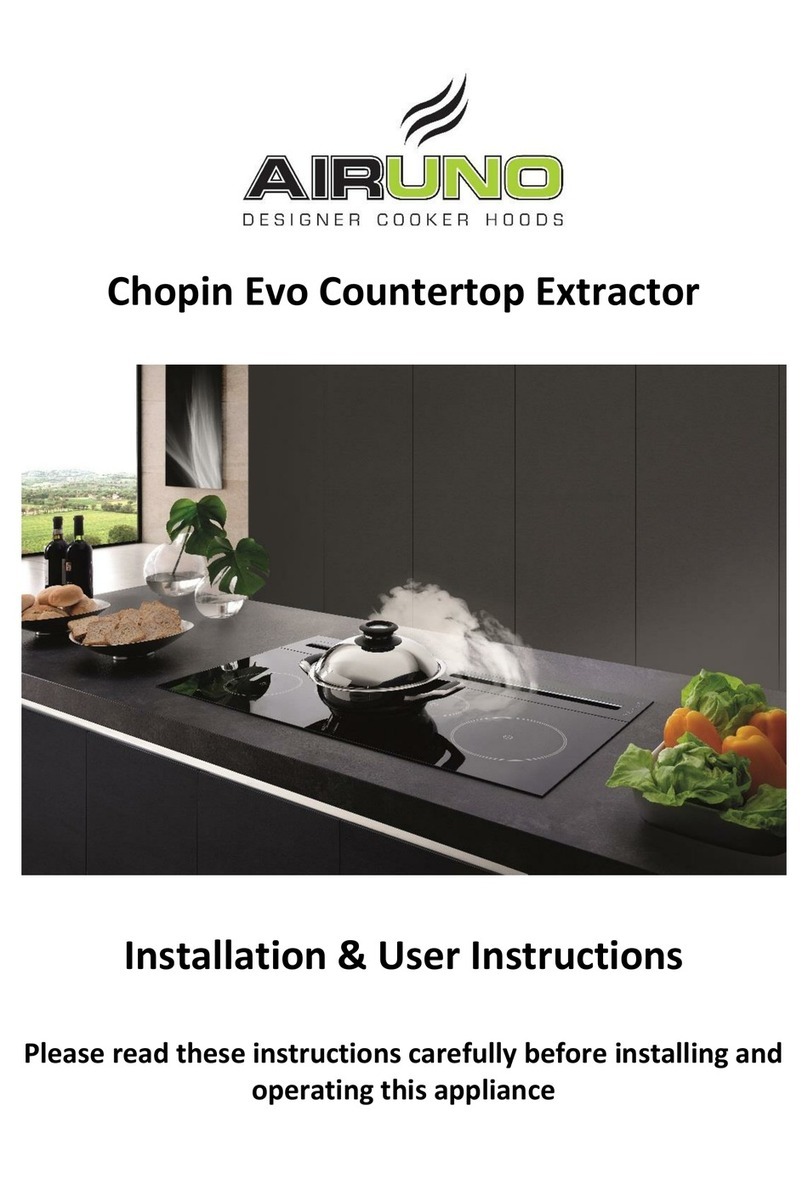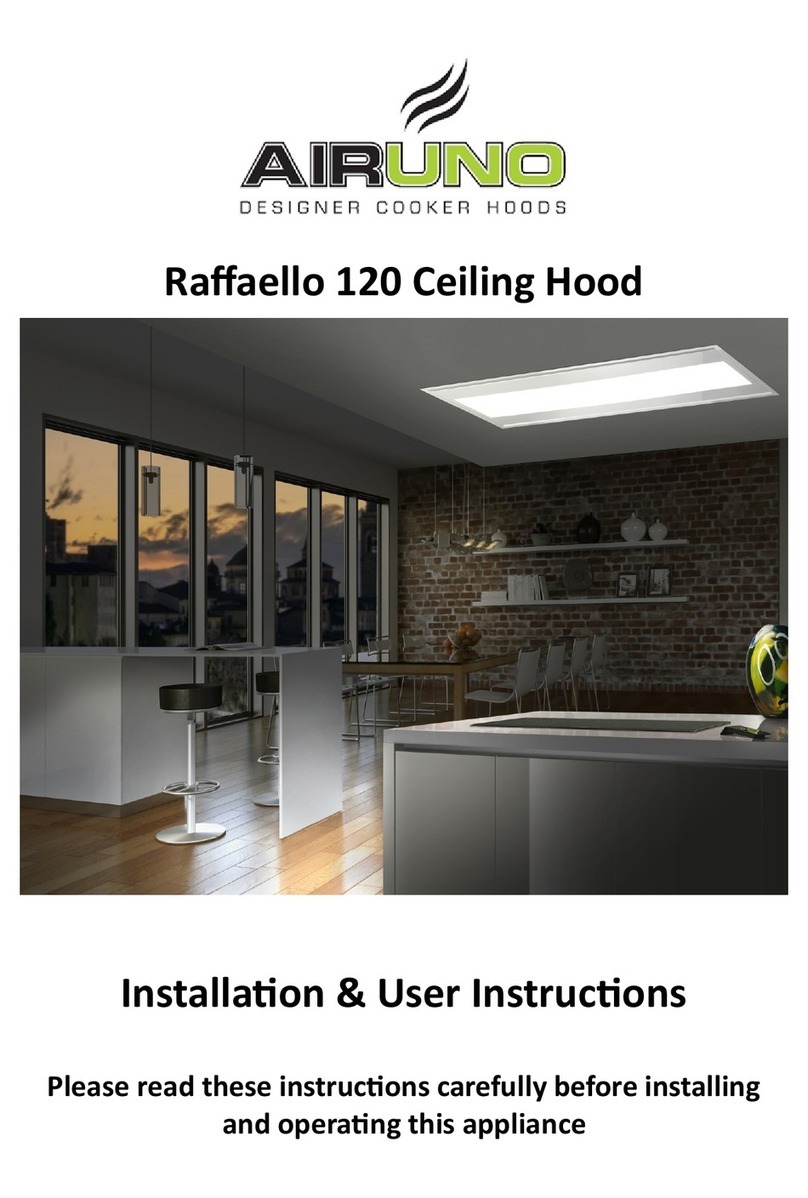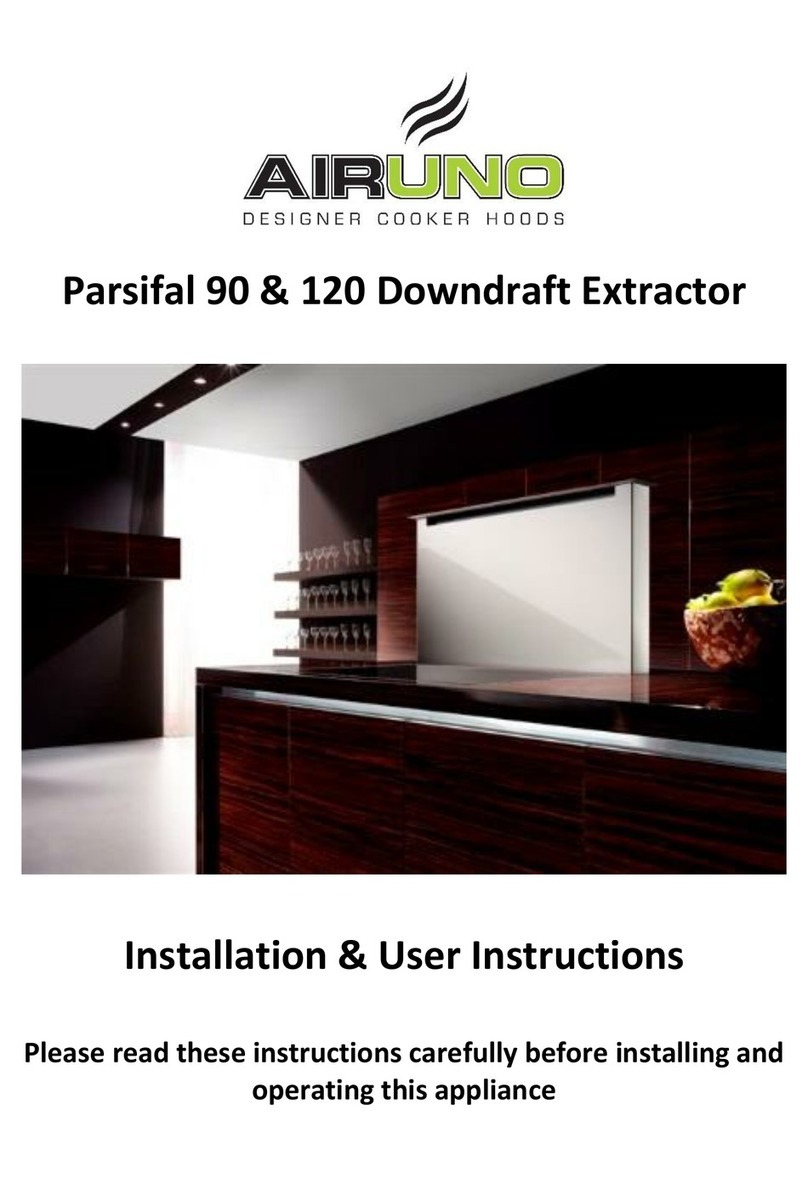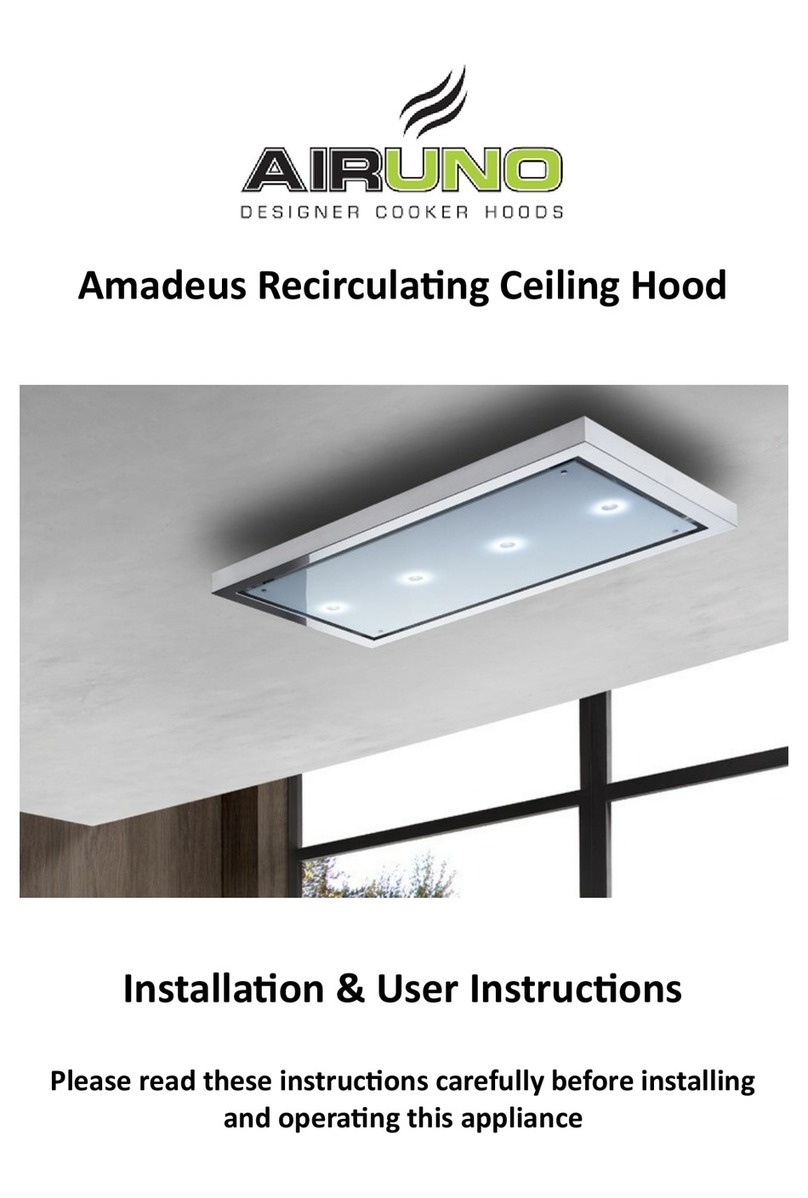4
Before carrying out any cleaning or maintenance
operation, make sure in advance that the
appliance is isolated from the mains electricity
supply.
Incorrect installation or faulty maintenance (not
conforming to the requirements set out in this
booklet) can cause harm to people, animals or
property. In such cases Air Uno is absolved from
any civil or criminal responsibility.
This product complies with EU Directive
EU2002/96/EC.
The crossed bin symbol on the appliance indicates
that the product, at the end of its life, must be
disposed of separately from domestic waste, either by
taking it to a separate waste disposal site for electric
and electronic appliances or by returning it to your
dealer when you buy another similar appliance. The
user is responsible for taking the appliance to a special
waste disposal site at the end of its life. If the disused
appliance is collected correctly as separate waste, it
can be recycled, treated and disposed of ecologically.
WARNINGS:
-This appliance can be used by children aged from
8 years and above and persons with reduced
physical, sensory or mental capabilities, or lack of
experience and knowledge if they have been
given supervision or instruction concerning use of
the appliance in a safe way and understand the
hazards involved.
-Children shall not play with the appliance.
Cleaning and user maintenance shall not be
made by children without supervision.
-Before cleaning or performing any periodic or
urgent maintenance to the hood, isolate the
mains supply and turn the main switch off.
-Do not connect the hood to any piping used for
combustion appliances, such as burners, boilers
or fire places.
-Check that the main power supply corresponds
to the voltage required by the hood, which is
given on the silver label stuck inside the hood.
Ensure that the electric system is correctly
earthed and that the earth discharge works
correctly.
-When cooking do not use any materials that
could form high or unusual flames. Oil that has
been used twice and fats are very dangerous
and could easily catch fire. Do not prepare
flambé dishes under the hood.
-Once the specialised technician has completed
the installation of the hood equipped with a
remote motor, all the leads, connectors, ground
connections and the remote motor must not be
accessible to the user. Only the installer is
granted access by removing screwed on panel.
-Respect local legislation and regulations issued
by the relative authorities regarding the exhaust
air when the suction is operating. Failure to
respect and perform all maintenance and
cleaning operations described in this handbook
could cause a fire hazard.
ATTENTION: Accessible parts may become hot when
the hood is used with cooking appliance.
General information on the hob
Never allow the induction hob to operate
unattended, as the high power setting results
in extremely fast reactions.
When cooking, pay attention to the heat-up
speed of the cooking zones. Avoid boiling the
pots dry as there is a risk of the pots
overheating.
Do not place empty pots and pans on cooking
zones which have been switched on.
Take care when simmering pans as simmering
water may dry up unnoticed, resulting in
damage to the pot and to the hob for which no
liability will be assumed.
It is essential that after using a zone you switch
it off with the respective minus key and not just
with the pan recognition device.
Overheated fats and oils may spontaneously
ignite. Always supervise the preparation of food
with fats and oils. Never extinguish ignited fats
and oils with water. Switch the appliance off and
then carefully cover the flame, for example with
a lid or extinguisher blanket.
The glass ceramic surface of the hob is
extremely robust. You should, however, avoid
dropping hard objects onto the glass ceramic
hob. Sharp objects which fall onto your hob
might break it.
There is a risk of electric shocks if the glass
ceramic hob develops fractures, cracks, tears or
damage of any other kind. Immediately switch
off the appliance, disconnect the fuse
immediately and call customer service.
If the hob cannot be switched off due to a defect
in the sensor control immediately disconnect
your appliance and call customer service.
Take care when working with home appliances.
Connecting cables must not come into contact
with hot cooking zones.
